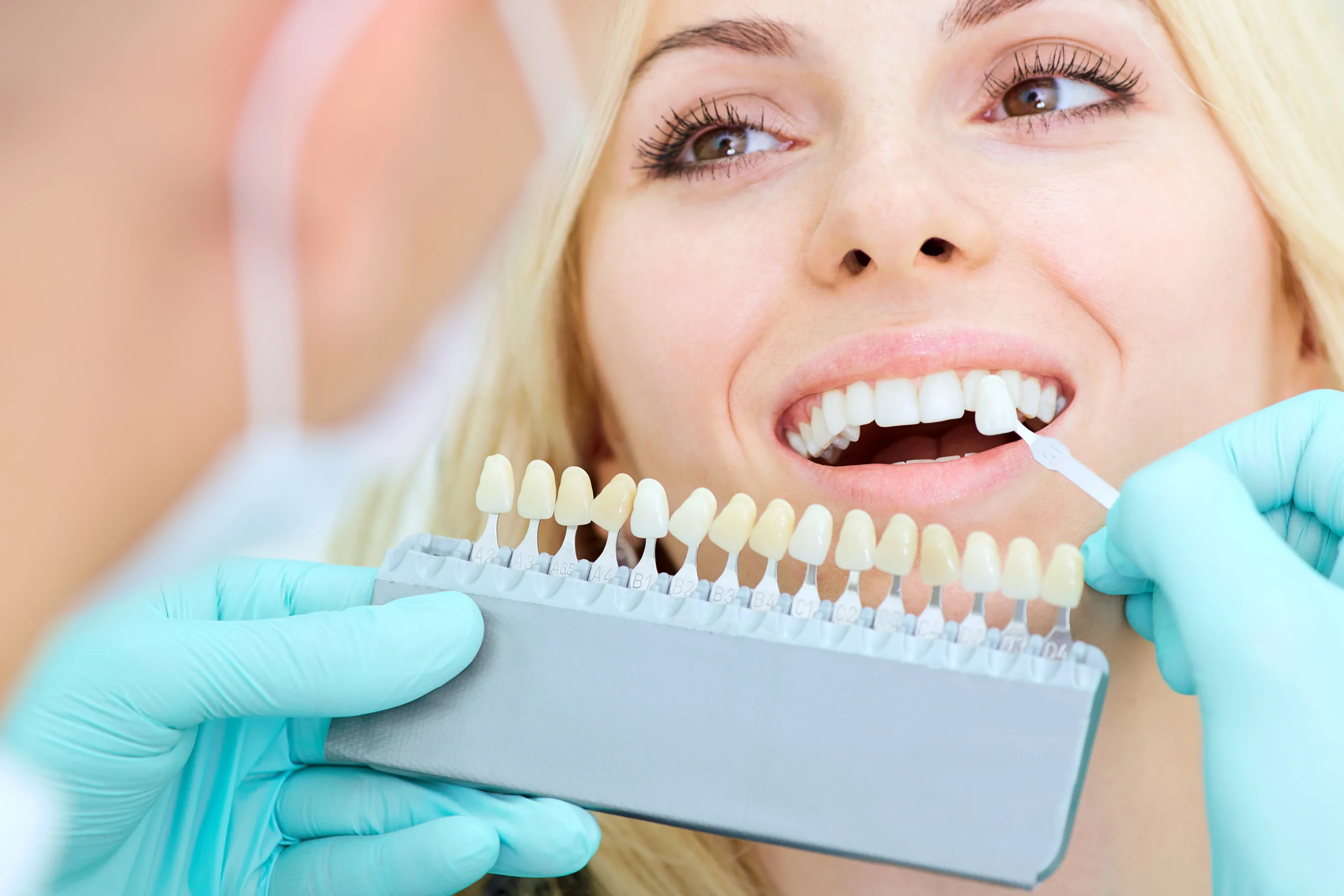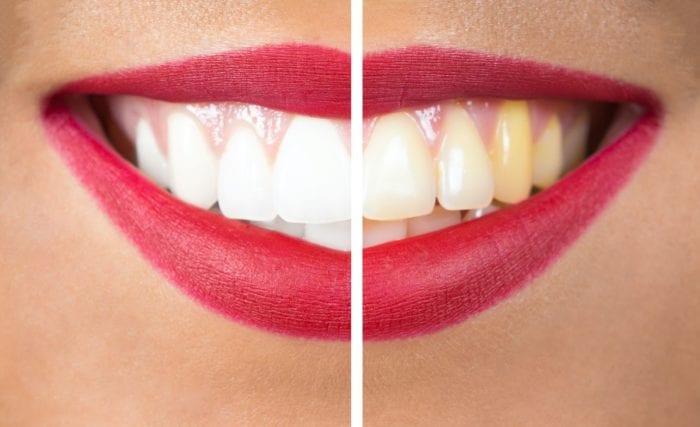

At-Home Whitening Kits:
Dentist-prescribed home whitening kits include custom-fitted trays and a bleaching gel. The trays are worn for a specified period each day, allowing for a more controlled and customized whitening process.
In-Office Professional Whitening:
Chairside Bleaching: In-office whitening procedures involve the application of a high-concentration peroxide gel directly to the teeth. A special light or laser may be used to enhance the bleaching process. The entire procedure typically takes about an hour.
Take-Home Kits from Dentist: Dentists may provide custom-fitted trays and a professional-strength bleaching gel for use at home. These kits are more potent than over-the-counter options and offer more controlled and predictable results.
Factors to Consider:
Type of Stains: Teeth whitening is most effective on stains caused by food, beverages, and tobacco. It may be less effective on stains caused by certain medications or intrinsic factors.
Sensitivity: Some individuals may experience tooth sensitivity during or after whitening. This is usually temporary, but it’s essential to follow instructions and, if needed, consult with a dentist about managing sensitivity.
Maintenance:
Whitening is not permanent, and the duration of results can vary. Maintaining good oral hygiene practices and avoiding stain-causing substances can help prolong the effects of teeth whitening.
Before undergoing any teeth whitening procedure, it’s advisable to consult with a dentist to determine the most appropriate method based on your oral health, the cause of discoloration, and your preferences. It’s also crucial to follow instructions carefully to achieve the desired results while minimizing the risk of side effects.



